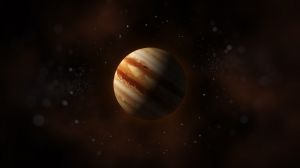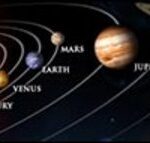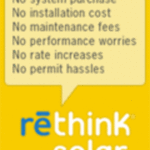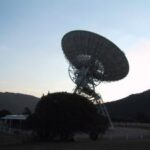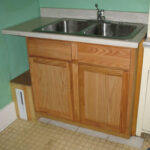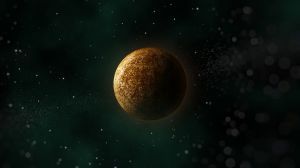Are you searching for kid’s facts about the planet Jupiter? Are you doing a science report on Jupiter? Or, are you a home school parent working on a lesson plan about the solar system? Just searching for some random trivia about planets? Here are a few fun facts for kids about the planet Jupiter.
If a spacecraft tried to land on Jupiter, it would sink.
If you someone how could fly in a space ship to Jupiter, you would sink once you landed. There is no solid surface on Jupiter.
Jupiter consists of mostly gas and liquid.
You would sink on Jupiter because the planet is made up of only gasses and liquids. It is about 90% hydrogen and 10% helium. There are traces of methane, ammonia, and water. Hydrogen gets squeezed by the planets atmosphere that it becomes a liquid. The clouds on Jupiter are mostly hydrogen gas.
Jupiter is a very stormy place.
Just like Earth has thunderstorms, Jupiter has lots storms. They have winds that are stronger than any hurricane winds on Earth. There is lightning and thunder. These storms can last for many, many years. Some storms on Jupiter can last for over a hundred years.
One of the most well-known storms on Jupiter is referred to as the “Great Red Spot.” It is an oval-shaped storm. The winds are spinning at roughly 250 miles per hour. Astronomers believe the storm is over 300 years old. It was first seen with a telescope about 300 years ago. The storm is very big, about 15, 400 miles in diameter. It is so big, two Earths could fit inside it.
There is another storm on Jupiter called “Red Spot Junior”, or “Little Red Spot.” It has changed colors. In 2004, the storm looked white in photos from space. In 2006, it had turned into a reddish color. Astronomers believe the storm sweeps up red material from the bottom of Jupiter’s atmosphere.
Jupiter is the third-brightest object in the night time sky.
The Earth’s moon and the planet Venus are the only night sky objects that are brighter. You can see the planet without a telescope.
Jupiter was named by the ancient Romans.
Thousands and thousands of years ago, the ancient Romans named the planets they could see in the sky. They named Jupiter after their most powerful mythological god.
Jupiter is the largest planet in the solar system.
Jupiter is the largest planet in our solar system. It is a huge planet! If it were hollow, more than 1300 planet Earths could cram inside. It is 1 1/2 times as big as all of the other planets put together.
Jupiter is the fifth planet from the sun.
The planets Mercury, Venus, Earth and Mars are closer to the Sun. Jupiter is about 484 million miles from the sun.
It takes Jupiter about 12 Earth years to orbit the sun.
All planets orbit (which means to travel around) about the sun. Jupiter takes about twelve Earth years to orbit the sun completely. A year equals the amount of time it takes a planet to travel around the sun. Therefore, one year on Jupiter is equal to twelve years on Earth. The reason why it takes longer is because Jupiter is further away from the sun.
Jupiter rotates around completely in just 9 earth hours, 55 minutes.
The Earth rotates on it’s axis in about 24 hours. (That is why a day is 24 hours long.) However, Jupiter rotates around in just nine hours and fifty-five minutes.
Jupiter has at least 63 moons.
Jupiter has at least 63 moons rotating around it. The four biggest ones are visible using binoculars. They were discovered by Galileo in 1610 and are called Galilean moons. One of its moons, called Io, has over 150 volcanoes. It is the most geologically active moon in our solar system that we know of. Scientists believe that another moon of Jupiter, Europa, has an ocean under it’s icy surface.
These are just a few fun facts about the planet Jupiter. Check out this link here for an educational video about Jupiter.
For some more planet facts, please read, “Interesting Facts for Kids About the Planet Neptune” and “Facts for Kids About the Planet Venus.” Happy Learning!
SOURCES:
Jupiter by Elaine Landau
Exploring the Solar System by Mary Kay Carson
http://nineplanets.org/jupiter.html
Our Solar System by Seymour Simon
11 Planets: A New View of Our Solar System by David A. Aguilar
http://www.youtube.com/watch?v=s56pxa9lpvo
